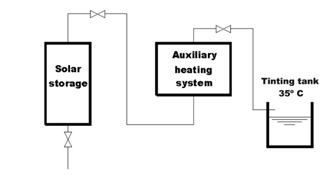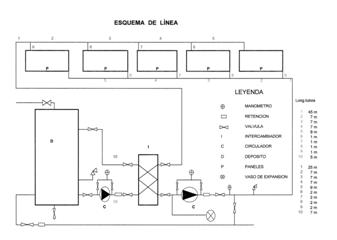Difference between revisions of "Harlequin (Malaga)"
From Efficiency Finder
(New page: Back to EFFICIENCY FINDER OF TEXTILE INDUSTRY Back to Information about cotton and bast fibres ;1. Built example A solar system has been built to increas...) |
m (Protected "Harlequin (Malaga)" [edit=autoconfirmed:move=autoconfirmed]) |
(No difference)
| |
Revision as of 13:45, 19 October 2010
Back to EFFICIENCY FINDER OF TEXTILE INDUSTRY
Back to Information about cotton and bast fibres
- 1. Built example
A solar system has been built to increase the energy efficiency of the process.
- 2. Industry Sector
Textile
- 3. Industrial application
No information is available.
- 4. Process description
- Process flowsheet:
No information is available.
- Processes:
No information is available.
- 5. Energy flows and temperature ranges
- Main heat supply system and fuel:
No information is available.
- Energy consumption (Sankey):
No information is available.
- Temperature ranges and other parameters:
No information is available.
- 6. Solar Thermal Plant
- Used scheme:
No information is available.
- Description of the main features and components:
- Designer and/or installer : Solysur alora s.l.
- Installed thermal capacity [kW] : 33 (47.15 m²)
- Collector type : Flat plate collector (GAROL I)
- Storage tank [m3] : 5
- Storage tank volume/Solar collector area (V/A) [lt/m2] : 106
- System concept : SPCHX water ?
- Annual useful solar heat [MWh/a] : 42.869
- Annual specific useful solar heat [kWh/kW*a] : 1299 (909 kWh/m2*a)
- Solar fraction [%] : 68.74
- Pictures of the built solar system:
- 7. Energy savings
- Pinch analysis results:
No information is available.
- Energy savings:
No information is available.
- 8. Economic evaluation
- Economic parameters of the built solar system:
- Total investment cost [€] : 32,942
- Total cost per kW installed [€/kW] : 998 (699 €/ m2)

